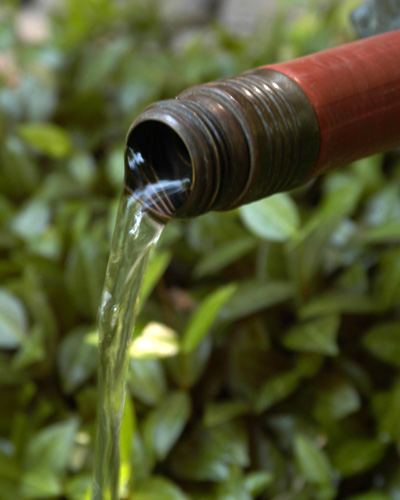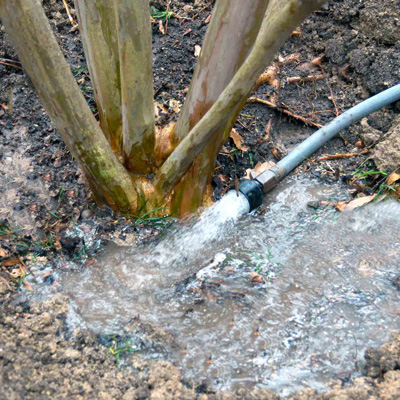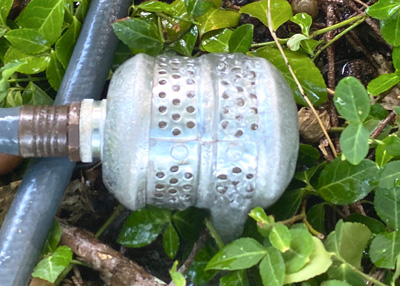Quick Tip on Watering New Plants

If you only have time to read one sentence about watering new plants in your landscape, here it is:
“You must water newly planted trees and shrubs by hand for their first couple of years in the ground!”
Simple explanation: Those plants have been growing in loose, lightweight potting soil to lower labor and shipping costs. Those lightweight soils dry out much faster than heavy native clay soils, so the new plants will become dry faster than established plants in adjacent soils.

“Sprinkler and/or drip irrigation alone will not be sufficient.”
It won’t soak all the way to the bottoms of the root systems. You must water new plants by hand.
Here are your ground rules:
- Give each new plant an amount of water equal to the pot from which it was planted. That means a 5-gal. plant would get 5 gal. of water; a 10-gal. plant would get 10 gal.; 20 gal. gets 20 gal. You get the picture.
- Frequency: Unless it rains heavily, water every other day now until late September. Non-negotiable! It would be almost impossible to overwater plants at these temperatures.

- Use a water breaker or water bubbler on the end of a garden wand so that you can irrigate at full pressure without washing soil away from the roots. It helps if you have a shallow berm built up around the plant to retain the water. Fill the “reservoir” a couple of times as needed to allow the water to soak deeply to all the roots.
Unrelated, but equally critical…
While you’re at it, wrap the trunks of all thin-barked shade trees to protect them against sun scald. This is critical for trees such as red oaks, water oaks, Chinquapin oaks, Chinese pistachios, red maples and many others. Until they develop thicker bark, they need that protection for their first 2-3 years in your landscape.
- Watch here next week for important information on use and abuse of mulches.
